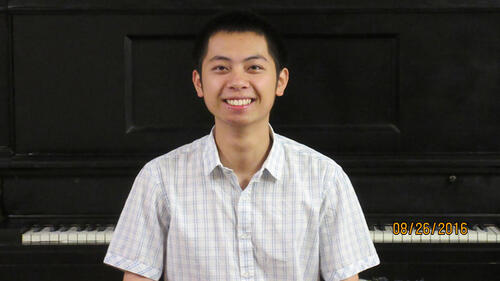
On December 5, 2022, Kaicheng Li successfully defended the thesis “Searching for the Electron Neutrino Anomaly with the MicroBooNE Experiment Using Wire-Cell Reconstruction” (advisor: Bonnie Fleming).
Li will next be working for Uber Technologies, Inc. as a Machine Learning Engineer.
Thesis Abstract:
The Micro Booster Neutrino Experiment (MicroBooNE) is a leading large-scale Liquid Argon Time Projection Chamber (LArTPC) experiment, designed for precision neutrino physics. The main scientific objectives of MicroBooNE include the investigation of the Low Energy Excess (LEE) observed by the MiniBooNE Experiment between 2002-2019 in the Booster Neutrino Beam (BNB) at Fermilab, the measurements of neutrino-argon interactions, and the research and development of LArTPC technology. This thesis focuses on understanding the MiniBooNE LEE through charged-current electron neutrino interactions. MicroBooNE BNB data, collected between February 2016 and July 2018, is analyzed for an electron-like low energy excess (eLEE) using Wire-Cell reconstruction. Enabled by human and machine-learning based selections, as well as novel statistical methods to limit modeling uncertainties, the Wire-Cell eLEE analysis disfavors the nominal eLEE hypothesis at 3.75σ significance with a simple vs. simple likelihood ratio test. Based on a nested likelihood ratio test guided by the Feldmans-Cousins procedure, the lower confidence bounds of MiniBooNE LEE are disfavored at 2.6σ, assuming statistical-only uncertainties, and at 3σ, assuming statistical and systematic uncertainties. A 3+1 active-sterile neutrino oscillation search is formulated, utilizing MicroBooNE data collected from both BNB and Neutrinos at the Main Injector (NuMI). BNB-only results exclude some allowed phase space by existing neutrino anomalies. Given different mixtures of intrinsic νe and intrinsic νμ , the combination of BNB and NuMI is expected to improve sensitivity, by resolving the cancellation effects between νe appearance and disappearance. Ongoing improvements for the NuMI flux prediction at MicroBooNE will also be an important piece to realize the optimal sensitivity in the combined BNB+NuMI search.